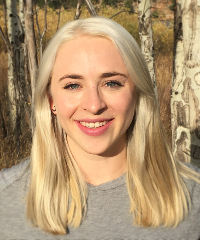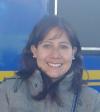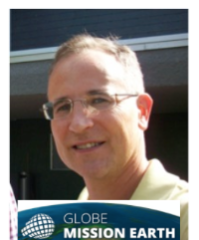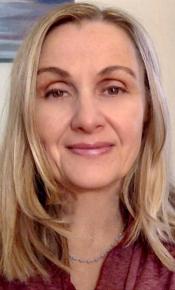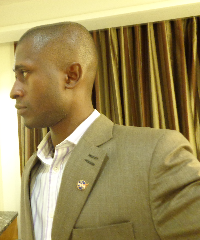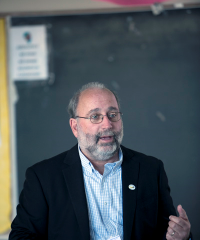Community Blogs
Community Blogs
Discover how the GLOBE community is engaging in all things GLOBE through the community blog posts below.
Learn how to create a GLOBE community blog post.
Filter By:
Blogs List
Observations of daily precipitation have been a part of GLOBE from the beginning. At the start, GLOBE’s participation model was that schools would take measurement following all of the original 17 protocols. Atmosphere temperature, precipitation, cloud, and soil moisture measurements were to be collected daily at a site easily accessible to the school. A permanent installation of an instrument shelter containing a max/min thermometer mounted to a post along with a rain gauge was the expected norm with other measurements taken nearby. Daily temperature and precipitation measurements were ...
Read More »
Posted in:
Field Campaigns:
EL NIÑO
GPM
GLOBE Science Topics:
GLOBE PROTOCOLS
GLOBE Working Groups:
SCIENCE WORKING GROUP
EDUCATION WORKING GROUP
Investigation Areas:
ATMOSPHERE
Primary Audience:
TRAINERS
TEACHERS
STUDENTS
PARTNERS
COUNTRY COORDINATORS
Teacher's Guide:
DOCUMENT TYPES
From the start, the measurement of daily maximum and minimum air temperature within one hour of local solar noon has been a key GLOBE protocol. The low cost approach was to use a U-tube thermometer housed in a wooden instrument shelter facing away from the equator. The U-shaped tube contained mercury with pins on either side of the mercury. As the air temperature warmed the pin on one side would move while the other pin stayed in place; when the air cooled, the pin on the other side would be pushed up. The pins were held in place by magnetized strips behind the thermometer tube so that ...
Posted in:
Curriculum:
STEM
TECHNOLOGY
GLOBE Science Topics:
EARTH AS A SYSTEM
EARTH SYSTEM SCIENCE
GLOBE PROTOCOLS
CLIMATE CHANGE
CLIMATE
GLOBE Working Groups:
SCIENCE WORKING GROUP
Investigation Areas:
ATMOSPHERE
Primary Audience:
TEACHERS
TRAINERS
STUDENTS
PARTNERS
SCIENTISTS
ALUMNI
COUNTRY COORDINATORS
Quaking aspens can grow in a wide range of environmental conditions. They can tolerate a wide variety of variations in climate and environmental conditions including slope, moisture, surrounding vegetation, and soil ( https://www.fs.fed.us/wildflowers/beauty/aspen/ecology.shtml ). I found this information with a simple web search. But, before there was access to infinite articles, websites, and papers all a click away, scientists had to figure out growth trends using data. So, before I decided to do a web search about the environmental conditions of aspen habitats (my memorized aspen ...
Posted in:
Event Topics:
SCIENCE SYMPOSIA AND FAIRS
GLOBE Science Topics:
SCIENTIST SKILLS
Investigation Areas:
EARTH AS A SYSTEM
HYDROSPHERE
PEDOSPHERE (SOIL)
ATMOSPHERE
BIOSPHERE
News Topics:
VIRTUAL SCIENCE FAIR
Primary Audience:
TEACHERS
STUDENTS
I recently had the pleasure of meeting a GLOBE student named Aspen. I was excited because my favorite type of tree is Aspen (Quaking Aspen to be more specific, Populus tremuloides to be even more specific), and I was able to tell her some of the fun facts about her namesake.
My favorite thing about aspens is their bark. The white powder on it can act as sunscreen. It’s only about an SPF of 5 but it’s still pretty cool. The bark also contains chloroplasts which means it can photosynthesize, making it one of the few deciduous trees that do not solely rely on leaves for ...
Posted in:
Investigation Areas:
BIOSPHERE
Primary Audience:
TRAINERS
TEACHERS
STUDENTS
PARTNERS
SCIENTISTS
ALUMNI
COUNTRY COORDINATORS
In my previous blog post, I showed the results of my surface temperature experiment. It was a great way to highlight some of the practical ways to use science, and it was yet another way for me to talk about my puppy. My experiment and accompanying blog was straightforward enough. I identified a problem, I designed an experiment, collected data, and presented the results. This is how science is done, right?! With years of experiment experience behind me, this should have been a very fast and easy task, but I had one problem that I forgot to account for, my Attention Deficit Disorder. ...
Posted in:
GLOBE Science Topics:
BACKYARD SCIENCE
SCIENTIST SKILLS
EARTH AS A SYSTEM
EARTH SYSTEM SCIENCE
Investigation Areas:
SURFACE TEMPERATURE
These are the results from my surface temperature experiment that I discussed in my previous blog post (same title, part 1).
Results and Conclusion :
Figure 2: Graph of average surface temperatures of the three surfaces over three days including air temperature data lines.
My results show that my hypothesis was half right (remember, it’s ok if your data results do not match your hypothesis!). During the day, asphalt was the hottest, concrete was in the middle, and grass was the coolest. The surface temperatures of all three dropped at night, however, I was ...
Posted in:
GLOBE Science Topics:
BACKYARD SCIENCE
DATA INCLUDED
GLOBE PROTOCOLS
EARTH SYSTEM SCIENCE
SCIENTIST SKILLS
Investigation Areas:
SURFACE TEMPERATURE
News Topics:
VIRTUAL SCIENCE FAIR
In case you missed it, last month, was all about the 2017 International Virtual Science Symposium . There were over 140 entries from all 6 GLOBE regions. Students submitted reports about their research on all of the “spheres” (hydrosphere, atmosphere, biosphere, pedosphere, and earth as a system) and they were reviewed by a panel of scientists, teachers, and science enthusiasts to be rewarded with stars and badges.
I had the wonderful privilege of being able to read through and review several projects. I was blown away with the thought and hard work that went into these ...
Posted in:
GLOBE Science Topics:
BACKYARD SCIENCE
DATA INCLUDED
EARTH SYSTEM SCIENCE
SCIENTIST SKILLS
GLOBE PROTOCOLS
Investigation Areas:
SURFACE TEMPERATURE
News Topics:
VIRTUAL SCIENCE FAIR
As Earth science has a single uncontrolled object of study, the first rule is to take today’s data today. While ice and sediment cores and fossils can reveal past conditions, the observations that can be made right now cannot be replaced by ones taken later. This goes well with the Native American adage, “You can’t step in the same river twice.” The environment is constantly changing and doing so on a wide range of time and space scales.
In a recent video post, Neil deGrasse Tyson said,
“One of the great things about science is that it is an entire exercise finding what is true. You ...
Posted in:
Curriculum:
SCIENCE AND MATH
Event Topics:
CAMPAIGNS AND PROJECTS (IOPS, ETC)
GLOBE LEARNING EXPEDITIONS
SCIENCE SYMPOSIA AND FAIRS
Field Campaigns:
EL NIÑO
SMAP
GLOBE Science Topics:
EARTH AS A SYSTEM
EARTH SYSTEM SCIENCE
GENERAL SCIENCE
CLIMATE CHANGE
CLIMATE
Investigation Areas:
EARTH AS A SYSTEM
Primary Audience:
TEACHERS
STUDENTS
ALUMNI
Heavy rains, floods and thunderstorms have affected thousands of families in Perú since January 14 th , 2017. Apparently, Peruvians were not prepared to face this strong natural events as well as their later consequences: Overpopulation of mosquitos that spread dengue and other diseases as chikungunya virus, reduction of some important crops (rice, banana, yucca, yellow corn, avocado, cotton, asparagus, sugar cane, mango, grapes, alfalfa and lemon) (El Comercio, 2017 a ) and damages in many public facilities (bridges and roads) and private property (houses) - 100000 victims, 157000 houses ...
Posted in:
Event Topics:
CAMPAIGNS AND PROJECTS (IOPS, ETC)
Field Campaigns:
EL NIÑO
SMAP
GLOBE Science Topics:
CLIMATE
GLOBE Working Groups:
SCIENCE WORKING GROUP
Investigation Areas:
EARTH AS A SYSTEM
HYDROSPHERE
PEDOSPHERE (SOIL)
ATMOSPHERE
BIOSPHERE
In the fall of 2016, the students in my Weather and Climate class, GEPL 4490/5490, at the University of Toledo developed projects based on El Nino. The students in class were give the task to look at GLOBE data from a part of the world in which El Nino has an effect. The students were also tasked to do research on El Nino and La Nina to see what it is.
The students looked at the following locations:
Taiwan 2015 – Nicole Jablonski, Bailey Hafner, Cortnee Halpin
Japan 1998 – Sean Smith,
Australia 1998 – Madhusanka Jayawardhana, Josh Coll, and Justin Maluchnik ...
Posted in:
Consider the rain gauge used in GLOBE, CoCoRaHS, and other citizen science programs. Just four pieces plus 2 mounting screws – an inner graduated cylinder, an outer cylinder, a cap/funnel, and a mounting bracket. The area of the outer tube is exactly 10 times the areas of the inner tube and the cap/funnel, so the graduations on the inner cylinder can be spaced ten times further apart. Thus, 0.2 mm of rain fills the inner tube to a depth of 2.0 mm, which one can read.
In addition, if heavy rainfall fills the inner cylinder, the rest of the rainfall overflows into the outer cylinder, ...
Posted in:
Curriculum:
STEM
Field Campaigns:
EL NIÑO
GPM
GLOBE Science Topics:
BACKYARD SCIENCE
GLOBE PROTOCOLS
Investigation Areas:
ATMOSPHERE
Primary Audience:
TEACHERS
STUDENTS
ALUMNI
Hello GLOBE friends!
The Evaluation Working Group has recently shared with you the results of the 2015 survey that was sent to the GLOBE teachers. The results from this survey, along with the results from the Annual Partner Survey provided us with useful information as to how to better support GLOBE in the classroom. Among other things,. the feedback we had from the teachers was that they are asking for evaluation tools they can use in their classrooms and for guidance on how to use these tools.
During our discussions in the Working Group we thought about this ...
Posted in:
This time was my first visit to Trinidad and Tobago and to the LAC region. The visit was first of its kinds, knowing vividly that Africans and the People of Trinidad and Tobago have so many things in common in terms of Geography and Historical antecedent. The motivation for my visit to Trinidad and Tobago started during the 17 th GLOBE Annual meeting at Maryland. Initially, it was just a brief discussion with Henry Saunders (Country Coordinator, GLOBE Trinidad and Tobago). However, after a year, I met Mr. Michael at GLOBE Expedition in New Delhi, India where we had in-depth ...
Posted in:
GLOBE Science Topics:
MEETINGS/CONFERENCES
GLOBE Working Groups:
SCIENCE WORKING GROUP
Investigation Areas:
PEDOSPHERE (SOIL)
Primary Audience:
TEACHERS
STUDENTS
SCIENTISTS
ALUMNI
COUNTRY COORDINATORS
Concerns regarding the impact of global warming on vector-borne diseases have intensified interest in the relationship between atmospheric factors and dengue fever incidence. Global climate change poses the threat of serious social upheaval, population displacement, economic hardships, and environmental degradation. Changes in temperature, rainfall and relative humidity have potential to enhance vector development, reproductive and biting rates, shorten pathogen incubation period and encourage adult longevity. In addition, changes in wind direction, velocity and frequency will have an ...
Posted in:
GLOBE Science Topics:
CLIMATE CHANGE
GLOBE PROTOCOLS
Investigation Areas:
HYDROSPHERE
Learning Activities:
HYDROLOGY
Primary Audience:
TEACHERS
STUDENTS
Usually, scientific issues are difficult to understand, most of the time because they are presented as a collection of facts with a lot of information to be analyzed at the same time that does not allow the student´s learning in easy way, because it is necessary a big memory and reasoning capacity of many elements in a short time. It demands the investment of long time to learn and short time to forget (Negrete and Lartigue 2004).
On the other hand, Storytelling is considered a powerful educative tool because it improves student´s comprenhension about facts, along the ...
Posted in:
GLOBE Working Groups:
SCIENCE WORKING GROUP
Hi All,
The Urban Heat Island/Surface Temperature Research Campaign was very successful this year. There were a total of 1306 surface temperature observations from 59 schools during the Urban Heat Island/Surface Temperature Research Campaign.
Schools that have participated so far (I put the country the schools are in and the state for the schools in the United States):
21CCLC Newport Community School - 12
Al Fisaliah Gifted School at Jeddah, Saudi Arabia – 10
Al-Anjal Intermediate Schoo at Rejal Alma’a, Saudi Arabia - 2
Al-Fahd Secondary School at Rejal Alma'a, Saudi ...
Posted in:
It was great to see the GLOBE presence at the AMS Annual Meeting in Seattle last week. Monday, the Symposium on Education is focused on K12 initiatives. The morning sessions all focused on GLOBE related activities and projects that included the NASA Mission Earth Project, GOES-R/16, the new Elementary GLOBE Climate book, and the International Virtual Science Fair. The new GLOBE Cloud app was presented in the afternoon. There were several projects presented in the Education Poster session as well. It would be great to see even more presentations of all the innovative and ...
Posted in:
Hi All,
We are well into the Urban Heat Island/Surface Temperature Student Research Campaign. Data are coming into the GLOBE website from schools from around the world. To date there have been 43 schools that have uploaded data to the GLOBE website. As I am writing this, there are a total of 596 surface temperature observations taken and entered on the website from December 1 to December 14, 2016. That’s a whole lot of data.
The most observations have come in from Rick Sharpe’s students at Huntington High School in West Virginia with a total of 202. Kim Clark’s students from John ...
Posted in:
Hi All,
It is exciting that we started a new Urban Heat Island/Surface Temperature Student Research Campaign that was formally knows as the Surface Temperature Field Campaign. I wanted to get an email out before the campaign started, but I came down with a bad cold. 27 schools have taken observations and entered them on the GLOBE website. I know that many more of you have taken observations or are planning to take observations. If you can, please enter your observations on the GLOBE website sooner than later. I will take a look at the observations. This research campaign is a chance ...
Posted in:
In most scientific research an important test is whether the results of an experiment can be repeated, typically repeated by another lab and research group. A result that cannot be confirmed in this way is generally viewed as invalid. This is a great test for controlled experiments where virtually identical experimental conditions may be achieved.
In Earth science research involving observations of the natural world, experimental conditions cannot be reproduced. For environmental research the standard must switch for repeatable to intercomparable – capable of being compared. ...
Posted in:
GLOBE Science Topics:
GENERAL SCIENCE
EARTH SYSTEM SCIENCE
BACKYARD SCIENCE
GLOBE PROTOCOLS
Investigation Areas:
HYDROSPHERE
PEDOSPHERE (SOIL)
ATMOSPHERE
BIOSPHERE
Primary Audience:
TRAINERS
TEACHERS
STUDENTS
SCIENTISTS
ALUMNI
—
20 Items per Page







